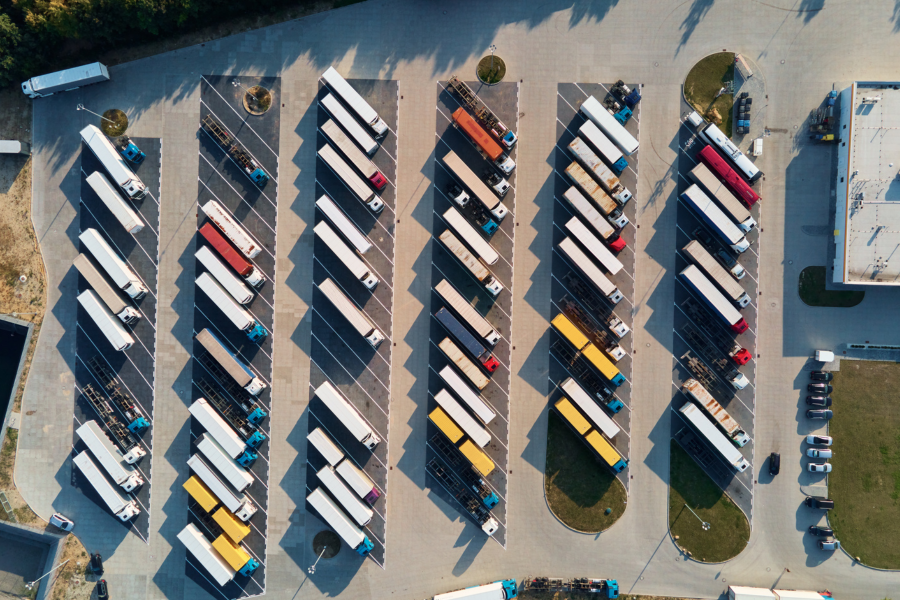
Many New Jersey communities struggle with striking a balance between generating revenue for services like schools, police and public works and protecting open space. In recent years, the economic pressure on communities to site warehouses has grown. This pressure has run head-long into the dangers of climate change, made worse when open space is lost.
Industries devoted to the movement and storage of goods provide jobs to nearly one out of every eight employed New Jersey residents. The drive to site new warehouses to meet demand can have dire consequences for communities, unless special care is taken when applications to build them are submitted. One of the challenges: land use decisions in our state are largely made at the municipal planning board level. There are no uniform state-wide standards.
Advocacy organizations like Clean Water Action are pressing our New Jersey legislators and issued a report about the need to adopt state-wide standards to prevent the kind of warehouse harms that residents across the state are currently facing and how best to do it.
An article written for the Mercer County Bar Association by NJ Board Member Tirza Wahrman and husband Warren Mitlak describes a recent proposed warehouse project in West Windsor, currently stalled in the Appellate Division, and reviews strategies that communities can use to stop irresponsible siting of warehouses:
"They Paved Paradise and Called it a Parking Lot" : Stopping Warehouse Sprawl - Challenges and Opportunities1
By Tirza Warhman and Warren Mitlak2
Originally published in Mercer County Lawyer, A Publication of the Mercer County Bar Association, Winter 2024, Volume 43, Issue 1
A. Introduction
New Jersey, our nation’s most densely populated State, has witnessed a record growth of warehouses over the past ten years.3 This phenomenon has occurred at a time when climate change has increased the vulnerability of many of our communities to heightened flood risk. New Jersey’s 1,777 large warehouses (exceeding 500,000 square feet in size) lie within a half mile from about 1.9 million residents throughout the State, according to a recent report from the Environmental Defense Fund.4
Properly-sited warehouses can bring significant benefits in job creation and commercial ratables. At the same time, they bring substantial costs in the form of increased flood risk with the loss of open space, traffic congestion, and air pollution from large diesel-burning trucks. In addition, warehouse siting disproportionately impacts “overburdened communities,” consisting of lowincome residents who may lack the political capital to mount effective opposition to inappropriate warehouse siting.
Siting and zoning decisions made by municipal planning boards can have outsized impacts on neighboring communities that have no say on their siting. Are our State and local regulators up to the task of imposing regulatory oversight to contain the costs and environmental impacts? The record so far is open to question. The vigilance of affected communities and engagement with our state legislators to enact meaningful legislative proposals are critical to promoting sound regional planning.
To quote from the State Planning Commission Warehouse Siting Policy, “[in] recent years, industrial-scale warehousing for goods storage and distribution to businesses and retail customers has undergone rapid change with the growth of e-commerce and rising consumer expectations for same-day delivery services.”5
Warehouses do add jobs to the state’s economy and account for roughly 12 percent of total employment.6 But the benefits of job growth and ratables can come at a steep cost.7 Among the costs:
1. Increased Flood Risk
Flood risk caused by siting of warehouses on formerly undeveloped land Climate change is a fact in New Jersey, and nowhere is it more evident than in the increased incidence of severe flooding and precipitation across the State. Floods are already the most common and among the most deadly disasters in the United States. Warehouses have large building footprints. Ideally, they would be built on already-developed land, e.g., land where factories or other industry have been previously sited. Tim Evans, supra However, with the continued appetite of builders for new warehouses, combined with the fiscal self-interest of municipalities, there is pressure to build on undeveloped land. Tim Evans, supra. As extreme weather driven by climate change continues to exacerbate sea level and inland river rise, floodprone areas in New Jersey and around the country are expected to grow by nearly half in just this century.8
New Jersey in recent years has seen a significant increase in severe weather events. Id. To quote the Watershed Institute in its pending brief challenging the Department of Protection’s (DEP) issuance of a flood hazard area permit for the Bridge Point warehouse complex in West Windsor. “No one can control when and where it rains, but dangerous flooding can be anticipated.” Watershed Institute Brief, In the Matter of Flood Hazard Area Verification and Flood Hazard Area Individual Permit, 1113-22- 0002.1 LUP220002 (filed Appellate Division, October 6, 2002, page 1).
2. Traffic congestion
According to the State Planning Commission, a typical 1-million-squarefoot warehouse has an average daily traffic rate of 1,740 trips per day. Distribution Warehousing and Goods Movement Guidelines, issued September 7, 2022, (hereinafter State Planning Commission Guidance), page 11. This projected increase in traffic stresses our already-congested roadways and strains local police and emergency services. See Jon Hurdle, NJ Spotlight, “Warehouse Opponents Step Up Campaigns,” January 4, 2023 (describing citizen opposition to proposed warehouse siting in West Windsor, Robbinsville and Phillipsburg centering on projected heavy increases in truck traffic).
3. Impacts on air quality
According to the State Planning Commission, emissions of air pollutants and greenhouse gases from diesel-powered delivery vans and tractor trailers represent the most substantial environmental impact from warehouse facilities. State Planning Commission Guidance, page 22. As the Commission report reminds us: there is “mounting evidence that diesel exhaust poses major health hazards.” Id. The World Health Organization (WHO) “classifies diesel exhaust as carcinogenic to humans, even at low concentrations. The electrification of truck fleets to avoid these harmful emissions appears to be many years away. Id.
4. Disproportionate impact on overburdened communities
Many warehouses are sited in “overburdened communities.” Overburdened communities are defined as those that contain a significant number of minority residents and those living below the federal poverty line. For example, the Ironbound community in Newark is multi-ethnic and largely working-class. The area is dotted with large warehouses, factories and industrial properties, abutting multi-family homes and public housing. The community is disproportionately impacted by air pollution, toxic waste and “anything that is detrimental for the environment and their health,” in the words of Tolani Taylor, NJ Zero Emissions and Warehouse Organizer, Clean Water Action.9
Read the full article in Mercer County Lawyer here.
1 “Big Yellow Taxi” is the title of a song by Joni Mitchell.
2 Tirza Wahrman is a principal in the Law Office of Tirza Wahrman, LLC, located in West Windsor, New Jersey. Tirza is an elected Director of the Environmental Law Section of the New Jersey Bar Association. She also serves on the New Jersey Advisory Board of Clean Water Action. Tirza is also an adjunct assistant professor in Political Science at Rider University. Warren Mitlak is a paralegal in the Law Office of Tirza Wahrman and has a background in project management. The views expressed herein are those of the authors and are not attributable to the Mercer County Bar Association, Rider University or Clean Water Action.
3 Tim Evans, Warehouse Sprawl, Plan Now or Suffer the Consequences, New Jersey Future, January 2022
4 Sammy Gibbons, NorthJersey.com, As warehouses proliferate across NJ, concerns rise over health impact for nearby residents, July 13, 2023
5 Warehouse Guidance, NJ.Gov (page 4)
6 Tim Evans, Warehouse Sprawl, Plan Now or Suffer the Consequences, New Jersey Future, January 2022
7 Tim Evans, Warehouse Sprawl, Plan Now or Suffer the Consequences, New Jersey Future, January 2022
8 Flooding and Climate Change - Everything You Need to Know, NRDC, November 2023
9 Sammy Gibbons, NorthJersey.com, As warehouses proliferate across NJ, concerns rise over health impact for nearby residents, July 13, 2023


